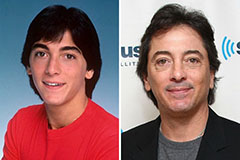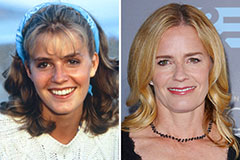The Only Guide for Causey Orthodontics
Table of ContentsOur Causey Orthodontics DiariesCausey Orthodontics Can Be Fun For EveryoneThe Causey Orthodontics PDFsCausey Orthodontics Fundamentals ExplainedCausey Orthodontics Things To Know Before You Buy
Ignoring occlusal relationships, it was typical to eliminate teeth for a range of oral concerns, such as malalignment or congestion. The principle of an undamaged dentition was not commonly valued in those days, making bite relationships appear unimportant. In the late 1800s, the principle of occlusion was vital for producing dependable prosthetic replacement teeth.As these concepts of prosthetic occlusion progressed, it became an indispensable tool for dentistry. It remained in 1890 that the job and effect of Dr. Edwards H. Angle started to be felt, with his payment to modern orthodontics specifically notable. Originally concentrated on prosthodontics, he showed in Pennsylvania and Minnesota prior to guiding his focus in the direction of dental occlusion and the therapies required to preserve it as a regular condition, hence ending up being called the "dad of modern-day orthodontics".

The concept of excellent occlusion, as proposed by Angle and included right into a classification system, made it possible for a shift towards dealing with malocclusion, which is any deviation from normal occlusion. Having a complete set of teeth on both arches was very demanded in orthodontic treatment as a result of the demand for precise relationships in between them.
Get This Report on Causey Orthodontics
As occlusion ended up being the vital concern, face proportions and visual appeals were disregarded - orthodontist expert. To achieve suitable occlusals without using outside pressures, Angle proposed that having perfect occlusion was the ideal way to get optimum facial aesthetics. With the death of time, it came to be quite evident that also a remarkable occlusion was not ideal when thought about from a visual point of view
It became apparent that orthodontic therapy can adjust mandibular growth, leading to the development of functional jaw orthopedics in Europe and extraoral force steps in the US. Nowadays, both useful appliances and extraoral devices are used around the world with the goal of changing growth patterns and kinds. Pursuing real, or at least boosted, jaw partnerships had come to be the primary objective of therapy by the mid-20th century.
Some Ideas on Causey Orthodontics You Should Know
 The American Journal of Orthodontics was produced for this objective in 1915; before it, there were no clinical goals to follow, neither any specific classification system and braces that lacked features. Till the mid-1970s, braces were made by wrapping steel around each tooth. With improvements in adhesives, it became feasible to rather bond metal brackets to the teeth.
The American Journal of Orthodontics was produced for this objective in 1915; before it, there were no clinical goals to follow, neither any specific classification system and braces that lacked features. Till the mid-1970s, braces were made by wrapping steel around each tooth. With improvements in adhesives, it became feasible to rather bond metal brackets to the teeth.This has had significant results on orthodontic treatments that are provided on a regular basis, and these are: 1. Correct interarchal relationships 2. Right crown angulation (pointer) 3.
The advantage of the layout hinges on its bracket and archwire combination, which requires only minimal wire bending from the orthodontist or clinician (orthodontist services). It's aptly named after this attribute: the angle of the slot and thickness of the bracket base ultimately identify where each tooth is located with little demand for extra manipulation
The Best Guide To Causey Orthodontics
Both of these systems utilized identical brackets for every tooth and demanded the bending of an archwire in 3 planes for situating teeth in their desired settings, with these bends dictating utmost positionings. When it pertains to orthodontic devices, they are divided right into 2 types: detachable and dealt with. Removable home appliances can be tackled and off by the client as called for.

Thus, almost all modern set home appliances can be thought about variations on this edgewise device system. Early 20th-century orthodontist Edward Angle made a significant payment to the globe of dentistry. He created four distinctive home appliance systems that have been used as the basis for lots of orthodontic treatments today, preventing a few exemptions.
Causey Orthodontics Can Be Fun For Anyone

The wire finished in a thread, and to move it forward, a flexible nut was utilized, which enabled an increase in area. By ligation, each individual tooth was connected to this large archwire (emergency orthodontist near me). Due to its minimal series of movement, Angle was unable to attain exact tooth positioning with an E-arch
These tubes held a soldered pin, which can be repositioned at each appointment in order to relocate them in position. Dubbed the "bone-growing device", this gizmo was thought to urge much healthier bone growth due to its possibility for moving force straight to the origins. Applying it verified frustrating in fact.
 Scott Baio Then & Now!
Scott Baio Then & Now! Mason Gamble Then & Now!
Mason Gamble Then & Now! Marques Houston Then & Now!
Marques Houston Then & Now! Sam Woods Then & Now!
Sam Woods Then & Now! Elisabeth Shue Then & Now!
Elisabeth Shue Then & Now!